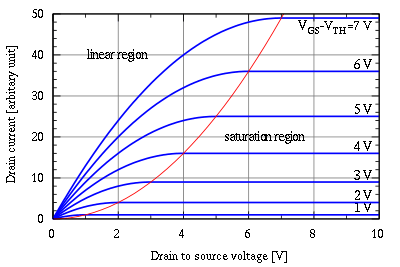Arbitrary unit

In science and technology, an arbitrary unit (abbreviated arb. unit,[1] see below) or procedure defined unit[2] (p.d.u.) is a relative unit of measurement to show the ratio of amount of substance, intensity, or other quantities, to a predetermined reference measurement. The reference measurement is typically defined by the local laboratories or dependent on individual measurement apparatus. It is therefore impossible to compare "1 arb. unit" by one measurer and "1000 arb. unit" by another measurer without detailed prior knowledge on how the respective "arbitrary units" were defined; thus, the unit is sometimes called an unknown unit.[2] The unit only serves to compare multiple measurements performed in similar environment, since the ratio between the measurement and the reference is a dimensionless quantity even if value of the reference is unknown in conventional units. Units of such kind are commonly used in fields such as physiology to indicate substance concentration, and spectroscopy to express spectral intensity.
When the reference measurement is precisely defined and internationally agreed upon, arbitrary units can also be a unit capable of public comparison. One example of a publicly defined arbitrary unit is the WHO International Unit.[2]
Abbreviations and nomenclature
Abbreviations for "arbitrary unit" include: arb. unit,[1] arb. u., AU,[3] and a.u.[4] Among these, "AU" and "a.u." are common abbreviations for astronomical units and atomic units.[5] For this reason, Japanese Journal of Applied Physics, and probably other academic journals, recommend against using "a.u." (Jpn. J. Appl. Phys recommends "arb. unit" instead).[6]
While arbitrary unit is not a formally recognized unit,[1] IUPAC and IFCC recognize the need to deal with "unknown units", and decided in 2008 to use the term "procedure defined unit" in their database.[2] The decision forbids using factors or denominators in conjunction with p.d.u. (such as "p.d.u./L").
References
- 1 2 3 Olesen, H. (1995). "Properties and Units in the Clinical Laboratory Sciences: I. Syntax and Semantic Rules (IUPAC-IFCC Recommendations 1995)" (PDF). Pure & Appl. Chem. IUPAC. 87 (8/9): 1563–1574.
- 1 2 3 4 Confirmed minutes for the meeting in Uppsala 2008-10-23 – 25 (PDF) (Report). Committee and Subcommittee on Nomenclature, Properties and Units (SC-C-NPU), IUPAC–IFCC. 2008. Retrieved September 10, 2010.
- ↑ "Standard abbreviations". Journal of Clinical Investigation. American Society for Clinical Investigation. January 2, 2008. Archived from the original on 28 July 2010. Retrieved September 10, 2010.
- ↑ "Abbreviations and Symbols List" (PDF). Information and Guidance for Authors, Experimental Physiology. The Physiological Society. Retrieved September 10, 2010.
- ↑ "Appendix C: Units of Measure" (PDF). AIP Style Manual (4th ed.). American Institute of Physics. 1990. Archived from the original on 15 September 2010. Retrieved September 9, 2010.
- ↑ "Instructions for preparation of manuscript" (PDF). Japanese Journal of Applied Physics. The Japan Society of Applied Physics. Archived from the original (PDF) on July 11, 2009. Retrieved September 11, 2010.